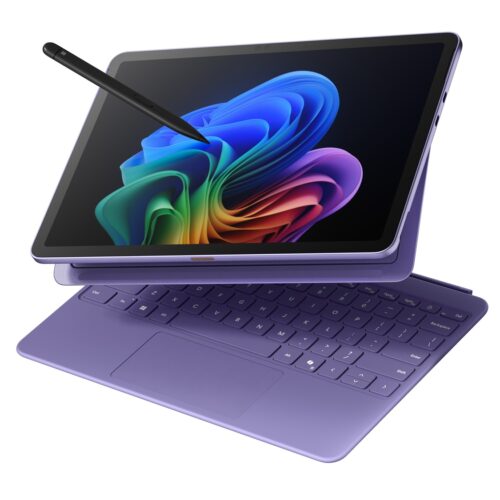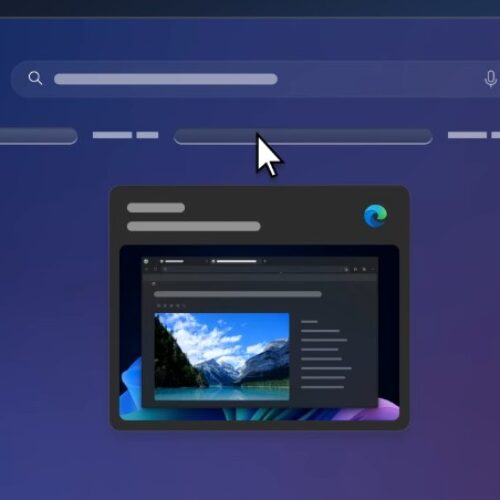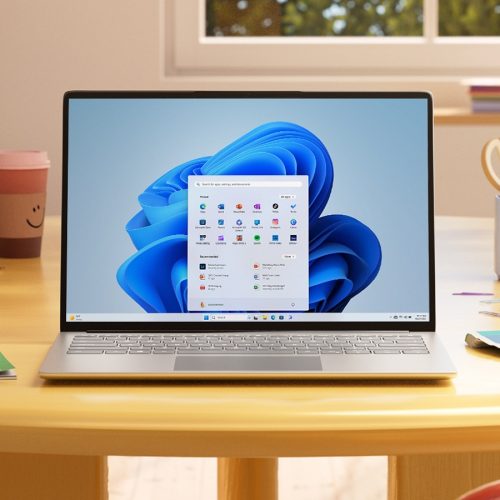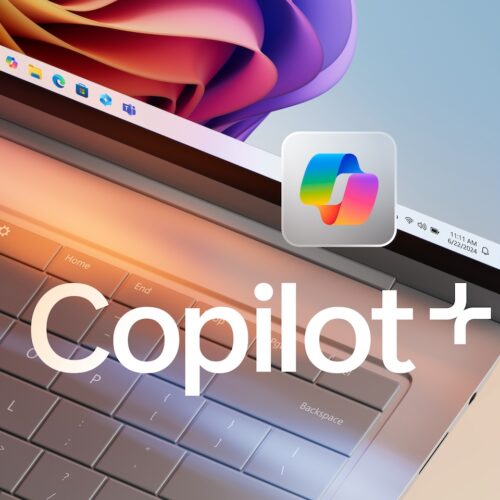Computex 2025: All the Weird and Wacky Gadgets Hitting the Scene
The annual computer show in Taipei, Taiwan is seeing some interesting gadget announcements that we're all here for.

Microsoft is introducing a pair of new Surface devices today, both aimed slightly down-market from the 11th-generation Surface Pro tablet and 7th-generation Surface Laptop that the company released last spring. One is a 13-inch Surface Laptop, which we've covered in more detail here. The second (and more notably changed) device is a new 12-inch Surface Pro tablet, which is the first significant design change we've seen in the Surface Pro lineup since the first ARM-based Surface Pro X was released in 2019.
Preorders for both new Surface devices begin today, and they begin shipping on May 20. The 12-inch Surface Pro starts at $799, and the keyboard cover remains a separate purchase, available for $149.
The 12-inch Surface Pro is a cheaper alternative to the $939-and-up 13-inch Surface Pro (which Microsoft is continuing to sell), and the smallest Surface Microsoft has tried since the 10.5-inch underspecced Surface Go series. In addition to the smaller screen, the base model includes a bunch of other minor downgrades from the flagship 13-inch tablet, as outlined in the table below. But it's also nearly half a pound lighter, and its 8-core Qualcomm Snapdragon X Plus processor should still deliver solid performance and compatibility with the extra Windows 11 features available on Copilot+ PCs.


© Microsoft

Microsoft is preparing to reintroduce Recall to Windows 11. A feature limited to Copilot+ PCs—a label that just a fraction of a fraction of Windows 11 systems even qualify for—Recall has been controversial in part because it builds an extensive database of text and screenshots that records almost everything you do on your PC.
But the main problem with the initial version of Recall—the one that was delayed at the last minute after a large-scale outcry from security researchers, reporters, and users—was not just that it recorded everything you did on your PC but that it was a rushed, enabled-by-default feature with gaping security holes that made it trivial for anyone with any kind of access to your PC to see your entire Recall database.
It made no efforts to automatically exclude sensitive data like bank information or credit card numbers, offering just a few mechanisms to users to manually exclude specific apps or websites. It had been built quickly, outside of the normal extensive Windows Insider preview and testing process. And all of this was happening at the same time that the company was pledging to prioritize security over all other considerations, following several serious and highly public breaches.


© Andrew Cunningham

Framework
The laptop maker Framework is pausing US sales of some of its lower-end models, citing President Donald Trump's tariffs.
Framework, a San Francisco-based company known for its modular and upgradable laptops, announced Tuesday that certain base systems in its Laptop 13 series would be removed from its US site and their sales temporarily halted.
"Due to the new tariffs that came into effect on April 5th, we're temporarily pausing US sales on a few base Framework Laptop 13 systems (Ultra 5 125H and Ryzen 5 7640U)," the company said on X. "For now, these models will be removed from our US site. We will continue to provide updates as we have them."
In response to a user asking for more information, the company cited the 32% reciprocal tariff that Trump levied against Taiwan.
"We priced our laptops when tariffs on imports from Taiwan were 0%," the company said. "At a 10% tariff, we would have to sell the lowest-end SKUs at a loss. Other consumer goods makers have performed the same calculations and taken the same actions, though most have not been open about it."
Framework isn't the first company to hit the pause button on some of its US sales while evaluating the ramifications of Trump's tariff blitz.
Nintendo, which manufactures largely in China, Vietnam, and Cambodia, has pushed back US preorders of its highly anticipated Switch 2 to an undetermined date (though it says the game console will still launch on June 5). The British automaker Jaguar Land Rover has stopped shipping its cars to the States, citing a new 25% tariff on automobiles.
A Framework spokesperson told Business Insider that no other information was available and that the company would provide updates as it received them.
Framework brands itself around making electronics that are inherently customizable and repairable — it's on a mission to improve consumer electronics, which it describes as "broken."
"Our philosophy is that by making well-considered design tradeoffs and trusting customers and repair shops with the access and information they need, we can make fantastic devices that are still easy to repair," its site says.
Its Laptop 16, for instance, allows for plenty of user fiddling — the keyboard, ports, and discrete graphics processing unit can all be swapped out, depending on a customer's preference.

During Tuesday's Nvidia GTX keynote, CEO Jensen Huang unveiled two so-called "personal AI supercomputers" called DGX Spark and DGX Station, both powered by the Grace Blackwell platform. In a way, they are a new type of AI PC architecture specifically built for running neural networks, and five major PC manufacturers will build them.
These desktop systems, first previewed as "Project DIGITS" in January, aim to bring AI capabilities to developers, researchers, and data scientists who need to prototype, fine-tune, and run large AI models locally. DGX systems can serve as standalone desktop AI labs or "bridge systems" that allow AI developers to move their models from desktops to DGX Cloud or any AI cloud infrastructure with few code changes.
Huang explained the rationale behind these new products in a news release, saying, "AI has transformed every layer of the computing stack. It stands to reason a new class of computers would emerge—designed for AI-native developers and to run AI-native applications."


© https://nvidianews.nvidia.com/news/nvidia-announces-dgx-spark-and-dgx-station-personal-ai-computers
While the excitement around 2-in-1 systems has cooled a bit over the years, they’re still useful solutions for anyone who wants a device that can act as both a tablet and a traditional laptop. In tablet mode, they’re handy for jotting down notes and drawing pictures, and in their full laptop configurations, they can let you manage e-mail and write as you would with a traditional notebook. Whether you’re a student, creative or just want a more flexible setup, a 2-in-1 solution gives you the best of both worlds without having to carry multiple devices.
We've tested and reviewed some of the top 2-in-1 options out there from brands like HP, Microsoft, Samsung and Apple. Whether you’re looking for a Windows PC that can occasionally act like a tablet, or traditional slates that can be empowered with keyboard accessories, we’ve rounded up the best models to consider.
When you’re shopping for a 2-in-1 system, there are some basic criteria to keep in mind. First off, consider the type of machine you’re looking for. Do you want something that can look like a traditional Windows laptop, but also has a screen that can twist into different orientations? (We often call these convertibles.) Or do you want a standalone tablet that works with a separate keyboard attachment? Tablet setups are typically lighter, but they’re often harder to use on your lap since they rely on kickstands or awkward cases.
Also, while some 2-in-1s offer built-in LTE or 5G connectivity, not everyone will want to pay the premium for it. An integrated cellular radio makes checking emails or replying to messages on the go far more convenient. But it also often costs more — and that’s on top of what you’ll pay for data. And as for 5G, you can hold off on it unless you live within range of a mmWave beacon. Coverage is still spotty and existing nationwide networks use the slower sub-6 technology that’s barely faster than LTE. For now, tethering a PC to your phone is still the best way to get online.
When it comes to tablet keyboards, you’ll also have to make peace with the fact that they’ll never feel as responsive as full-fledged laptop options. Their keys are shallower, and their layouts are often a bit different than typical PCs. Again, there’s a cost for portability.
See Also:
Sometimes, getting a third-party tablet keyboard might be just as good, and they’re often cheaper than first-party offerings. If you’re looking to save some money, Logitech’s Slim Folio is an affordable option for iPads, and if you don’t need your keyboard to attach to your tablet, Logitech’s K780 Multi-Device wireless keyboard is also a good pick.
While we’ve typically made sure to include a budget 2-in-1 in previous years, this time there isn’t a great choice. We would usually pick a Surface Go, but the latest model is still too expensive. Other alternatives, like cheaper Android tablets, are underpowered and don’t offer a great multitasking interface. If you want something around $500 that’s thin, lightweight and long-lasting, you’re better off this year looking at a traditional laptop (like those on our best budget PCs list). Alternatively, you might consider one of our top picks for the best Chromebooks, either as a back-to-school option or for basic tasks.
February 2025: We’ve retitled this guide to “Best 2-in-1 laptops and tablets” to be more accurate, and we’ve also updated the introduction and “Factors to consider” section to refer to convertible laptops and detachable tablet options.
June 2024: We updated our top picks to include the Microsoft Surface Pro Copilot+ edition.
Nathan Ingraham contributed to this report.
This article originally appeared on Engadget at https://www.engadget.com/computing/laptops/best-2-in-1-laptops-173038508.html?src=rss
©

© Devindra Hardawar for Engadget
At an event in New York City on Thursday, Microsoft unveiled two additions to the Surface line of PCs. The new Surface Pro and Surface Laptop both arrive with Copilot+ PC certification. Announced in May 2024, the program aims to identify business-focused devices that are designed specifically for the company’s AI platform, Copilot. It’s a […]
© 2024 TechCrunch. All rights reserved. For personal use only.

Last January at CES, Microsoft Chief Marketing Officer Yusuf Mehdi declared 2024 the "year of the AI PC." And whether you believe that prediction came true or not—many new PCs come with AI-accelerating neural processing units (NPUs) onboard, but far from all of them—you can't deny that Microsoft did try very hard to make it happen.
This year, Mehdi is back with another prediction: 2025 will be "the year of the Windows 11 PC refresh." This year is also, not coincidentally, the year that most Windows 10 PCs will stop receiving new security updates.
Mehdi's post includes few, if any, new announcements, but it does set the tone for how Microsoft is handling the sunsetting of Windows 10, attempting to strike a balance between carrot and stick. The carrots include Windows 11's new features (both AI and otherwise) and the performance, security, and battery life benefits inherent to brand-new PC hardware. The stick is that Windows 10 support ends in October 2025, and Microsoft is not interested in extending that date for the general public or in expanding official Windows 11 support to older PCs.


© Microsoft

I'd describe myself as a skeptic of the generative AI revolution—I think the technology as it currently exists is situationally impressive and useful for specific kinds of tasks, but broadly oversold. I'm not sure it will vanish from relevance to quite the extent that other tech fads like the metaverse or NFTs did, but my suspicion is that companies like Nvidia and OpenAI are riding a bubble that will pop or deflate over time as more companies and individuals run up against the technology's limitations, and as it fails to advance as quickly or as impressively as its most ardent boosters are predicting.
Maybe you agree with me and maybe you don't! I'm not necessarily trying to convince you one way or the other. But I am here to say that even if you agree with me, we can all celebrate the one unambiguously positive thing that the generative AI hype cycle has done for computers this year: the RAM floor for many PCs and all Macs is now finally 16GB instead of 8GB.
Companies like Apple and Microsoft have, for years, created attractive, high-powered hardware with 8GB of memory in it, most egregiously in $1,000-and-up putative "pro" computers like last year's $1,599 M3 MacBook Pro or the Surface Pro 9.


© Microsoft
PC gamers have almost too many options when it comes to titles to play, which is a great problem to have. With decades of games to choose from (and the first port of call for most indie titles, too), the options are endless. You also get the perks of (nearly always flawless) backward compatibility and console-beating graphical performance — if you've got the coin for it when you’re building your perfect kit or picking up a high-powered gaming laptop.
The whole idea of what a gaming PC is and where you can play it is shifting, too, with the rise of handheld gaming PCs like the Steam Deck. We've tried to be broad with our recommendations here on purpose; here are the best PC games you can play right now.
Check out our entire Best Games series including the best Nintendo Switch games, the best PS5 games, the best Xbox games, the best PC games and the best free games you can play today.
This article originally appeared on Engadget at https://www.engadget.com/gaming/pc/the-best-pc-games-150000910.html?src=rss
©

© Devolver Digital / Engadget
Prefer to offload all your Windows tasks to the cloud? Microsoft may just have the compact, desk-bound computer for you. On Tuesday at Microsoft Ignite 2024, the tech giant unveiled Windows 365 Link, a fanless, lightweight PC that connects to Windows 365. Windows 365 is a cloud-hosted, virtual Windows machine — like a typical Windows […]
© 2024 TechCrunch. All rights reserved. For personal use only.